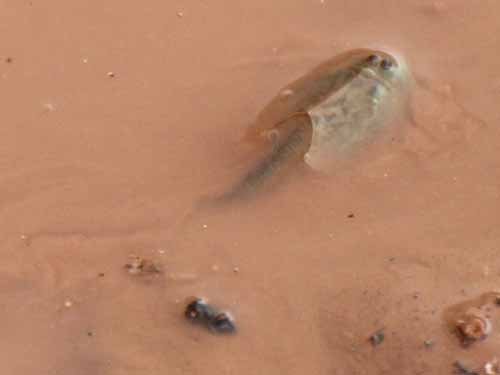It was approaching time for Rudolph and Tilly to hit the road. But first we had a nice lunch at the cafeteria again. Rudolph also did a quick photoshoot of us at the nearby Tunnel Overlook. He used to be a professional photographer doing model shoots, so we thought it might be fun. We did point out that the subject matter left a lot to be desired... after a hot and sweaty morning hike!

Scouting for a nice location

Hardly the best models he's ever worked with!

The clouds continued to build all around us.
They left at 1 pm for the Four Corners and we headed to the visitor center. We watched a video about the area and wandered around a lovely photo exhibit. We then learned about a ranger program that was going to be taking place at 3 pm.

The video showed another angle of the White House ruins, revealing how big it really is.

"Willie Cly", 1951 Monument Valley, by Jonathan Wittenberg

The Navajo translations were equally as impressive as the photos!

I thought this sign was odd until I saw a girl actually kick at the toilet handle to flush it.
When we stepped outside, the weather had changed drastically.



A horse grazes peacefully alongside the road.
We remained on the south rim, stopping at a few overlooks as we made our way back to the White House Ruins overlook where the ranger program was supposed to take place. Our first stop was back at Tunnel Overlook, where we had done the photoshoot.

These kind of signs were everywhere. But with an unemployment rate of around 50% on the reservation, it's not surprising.




By the time we returned to the car, high winds were busy whipping up a large sandstorm.
A brief stop at Tséyi' Overlook. The Navajo still farm the canyon floor, although modern implements have replaced the old digging sticks and pick-up trucks are more common than horses. These farms basically only produce enough for the family, with little left over for sale. It is a difficult environment filled with early frosts, sandstorms, drought, and torrential rainstorms.


Junction Overlook was where the two canyons met: Canyon de Chelly and Canyon del Meurto. There were quite a few cliff dwellings here.
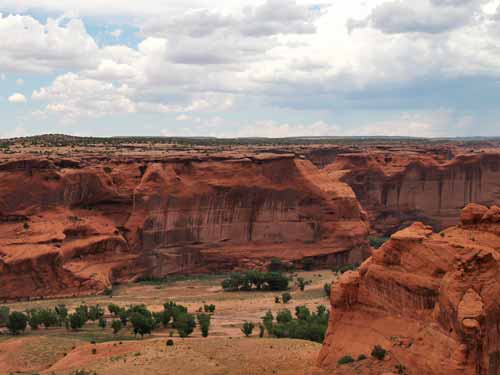




We arrived in time for the ranger talk, but it was more that she would answer any questions people had than an actual presentation. In spite of all the coulds, it was around 90 degrees F out, and with the humidity if felt much hotter!


About 40 - 50 families live in the canyon during the summer and move to the rim in winter. The river now contains two dams so its flow a lot less than what it was. The ranger told us there had been a 7-foot high flash flood last week. Nowadays, people get enough warning to be able to run to higher ground.

The White House Ruins
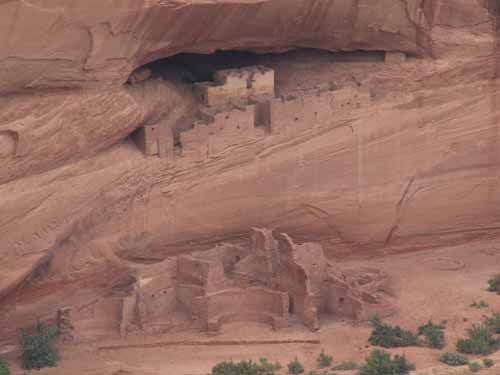
The lower house once had 50 - 60 rooms, of which only 17 remain. There were 20 rooms in the top level. The main construction was from 1045 - 1079. They built in the cliff because of flash floods. It is suggested the lower one was just used for trading. They started leaving around 1275 and were completely gone by 1300. The main theory is because of drought.

The path we took down earlier in the day

There used to be no wood in the valley. People had to go all the way to the mountains to get logs for building. The current trees are from the 1930's. Trees such as Russian olive and tamarisk were planted to hold down the soil because of erosion along the river bank. But by the 1980's, these invasive species had completely taken over the valley and clogged out anything else, including taking water from corn crops. Use of herbicides and burning them in winter were methods of pushing them back. They still remain a problem.
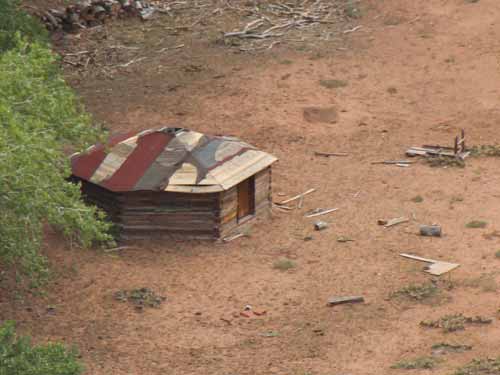
A hogan is a traditional Navaho sacred dwelling. It is built in harmony with the elements and blessed by a medicine man.

These are giant ant hills!
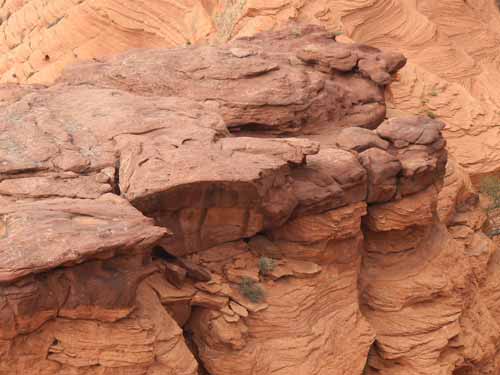
Distinctive rock formations
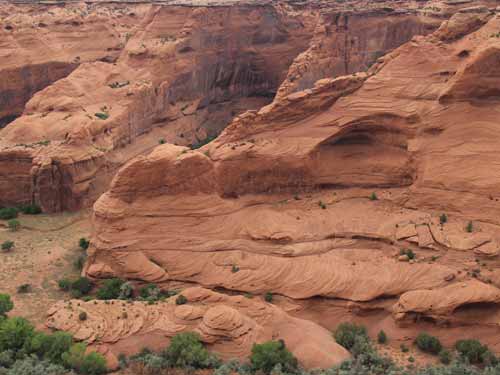
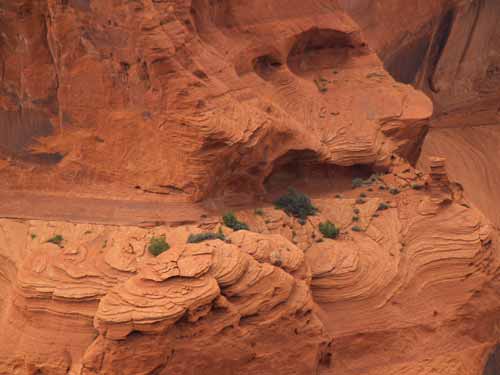



These odd little creatures were frantically skipping and thrashing about in a shallow puddle. The ranger just waved them off as tadpoles… but I'd never seen a tadpole with armor!
Research reveals that they were Tadpole Shrimp. There are considered 'living fossils' because their basic outward form has not changed significantly in the last 70 million years, exactly matching their ancient fossils. They are one of the oldest animal species still in existence. These crustaceans are omnivores, live in temporary pools often in places where few higher life forms can exist, and have gills on their legs.
